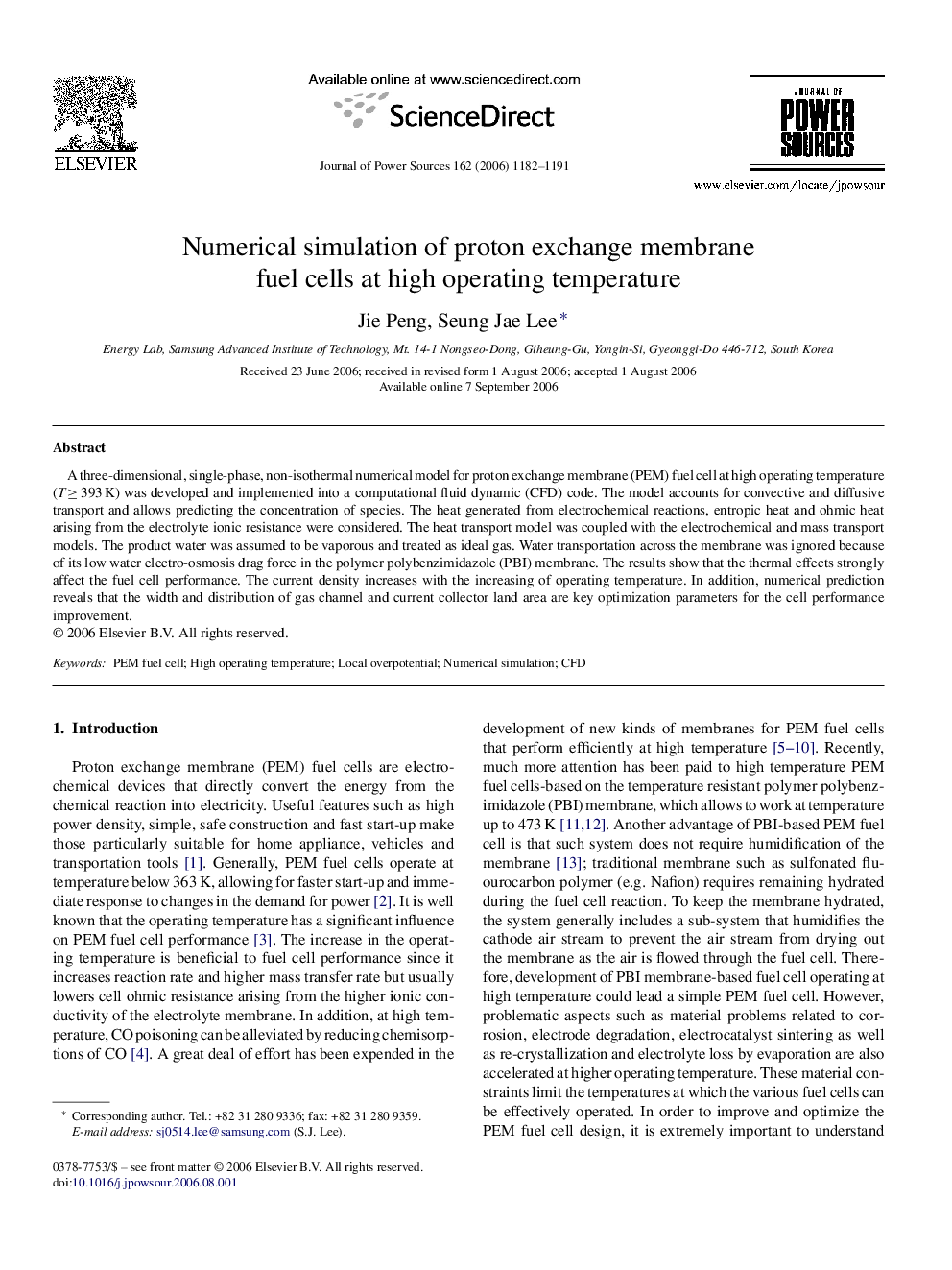| Article ID | Journal | Published Year | Pages | File Type |
|---|---|---|---|---|
| 1292492 | Journal of Power Sources | 2006 | 10 Pages |
A three-dimensional, single-phase, non-isothermal numerical model for proton exchange membrane (PEM) fuel cell at high operating temperature (T ≥ 393 K) was developed and implemented into a computational fluid dynamic (CFD) code. The model accounts for convective and diffusive transport and allows predicting the concentration of species. The heat generated from electrochemical reactions, entropic heat and ohmic heat arising from the electrolyte ionic resistance were considered. The heat transport model was coupled with the electrochemical and mass transport models. The product water was assumed to be vaporous and treated as ideal gas. Water transportation across the membrane was ignored because of its low water electro-osmosis drag force in the polymer polybenzimidazole (PBI) membrane. The results show that the thermal effects strongly affect the fuel cell performance. The current density increases with the increasing of operating temperature. In addition, numerical prediction reveals that the width and distribution of gas channel and current collector land area are key optimization parameters for the cell performance improvement.
